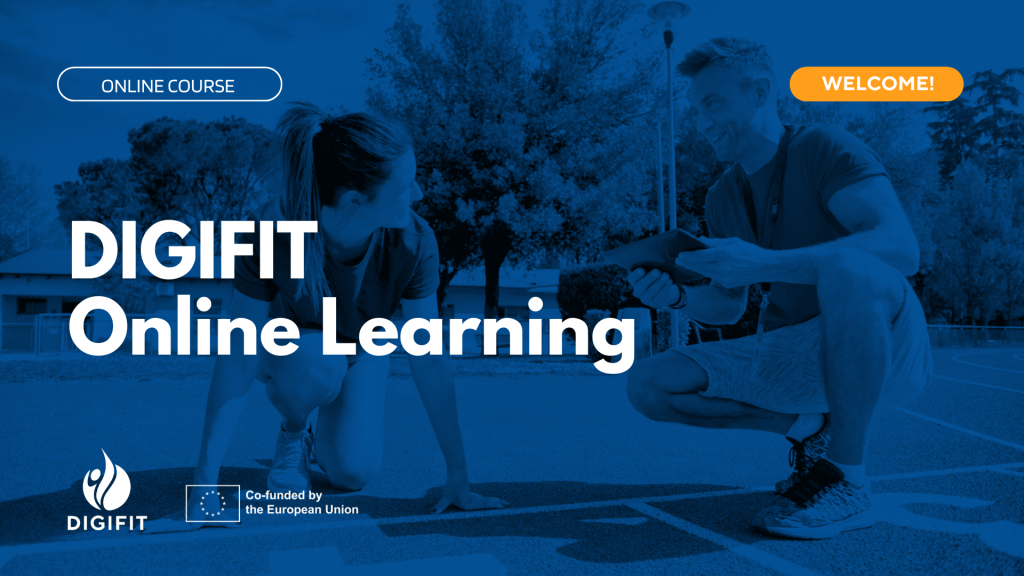
Welcome to our course “How to foster innovation and digital readiness in your grassroots sport organisations” – A guide to develop and run your grassroots sports initiative.
Since 1995, 
With the DigiFit project, ISCA joined forces with 5 partners from France, Denmark, Belgium, Ireland and Portugal to accelerate the digital transformation of grassroots sport organisations and their staff by helping to develop their digital readiness and resilience through capacity building. Through this diverse partnership with PRN SI – National Sport Innovations Resource Center of the French Ministry of Sport (France), DGI Impact (Denmark), European Platform on Sport Innovation – EPSI (Belgium), University College Cork (Ireland) and Institute for Sport and Youth – IDPJ (Portugal), we are bringing together a pool of various skilsset and experiences.
WHY SUCH A COURSE?
From the DigiFIt partners perspective’s, digital transformation relates to using digital technology to create new value in work processes and change business models. Innovation is booming in the field of sport and physical activity, including in the grassroots sports sector.
In today’s rapidly evolving digital landscape, staying ahead of the curve is essential for the success and sustainability of grassroots sport organisations. We believe it is crucial to stay updated and to avoid the innovation gap.
This training tool is thus designed to equip you with the knowledge and skills needed to embrace innovation and enhance digital readiness within your organisation.
Throughout this course, you will explore practical strategies and best practices to foster a culture of innovation, leverage digital tools, and drive transformative change. Whether you’re a coach, administrator, or volunteer, this training will empower you to harness the power of technology and innovation to achieve your organisational goals so you will be Fit for the Digital Age.
Join us on this journey to unlock new opportunities, improve operational efficiency, and create a more engaging experience for your community. Let’s get started and pave the way for a brighter, more innovative future in grassroots sports!
OUR PROMISE
By the end of the DigiFit online course, you will be able to:
🔹 List & Explain the challenges and benefits of embracing digitalisation (Digital awareness)
🔹 Identify opportunities for using digital tools in your organisation (Digital readiness)
🔹 Create a solution for a particular problem in your organisation that requires digital transformation
🔹 Design an action plan to realise your solution (Digital capacity)
Key information to navigate the course
- You will need up to 90 minutes to complete the course.
- Course materials: video transcripts, recommended readings, podcasts, and presentations are downloadable and included within each module.
- For each of the videos in this training, you can activate subtitles and auto-translation. To do so: 1. Click on the keyboard icon at the bottom right-hand side of the videoplayer to turn on the Subtitles/CC option + 2. Click on the gear icon (‘Settings’) and select in the Auto-translate tab your desired language
- After finishing each topic, click
 at the bottom of the page. This will help you know where you are (“Topic” will be marked with a checked icon in a green circle) and bring you straight to the next topic. Repeat the process with the module to mark your advancement.
at the bottom of the page. This will help you know where you are (“Topic” will be marked with a checked icon in a green circle) and bring you straight to the next topic. Repeat the process with the module to mark your advancement. - To finish the course you will need to complete all modules, take the test at the end to check your knowledge AND complete a quick feedback form.

